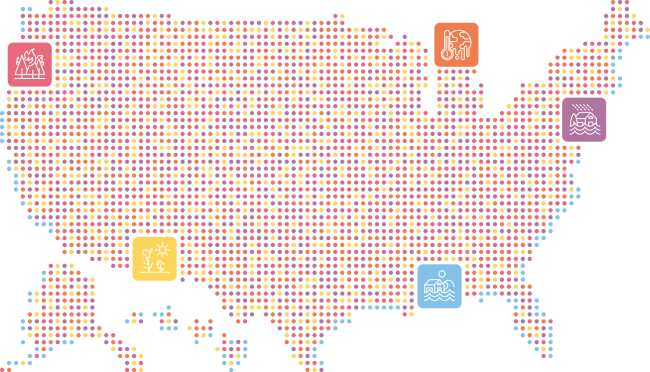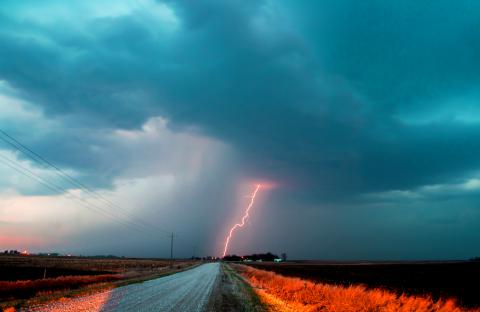
Get Started
While not a traditional component of supply chain risk management, climate risk to critical infrastructure is a growing concern across the United States. Managing climate risks means planning for a range of possible future climate scenarios and building in flexibility to adjust and adapt to a changing climate.

Climate Mapping for Resilience and Adaptation (CMRA) integrates information from across the federal government to help people consider their local exposure to climate-related hazards. The website also points users to Federal grant funds for climate resilience projects, including those available through the Bipartisan Infrastructure Law.

Climate Risks Resources
CISA and the Homeland Security Operational Analysis Center (HSOAC) developed this risk management framework to assess the risk of climate change to higher vulnerability National Critical Functions.
This resource, while aimed at emergency communications practitioners, it can help all communication providers and suppliers familiarize themselves with the impacts of extreme weather on communication systems and improve their response strategies. Some weather events may also produce multiple kinds of extreme conditions, resulting in compounding and concurrent communications concerns.
Enable your organization to meet the challenges of a changing climate by learning about potential climate hazards so you can protect your vulnerable assets.
 NOAA 2022 State Climate Summaries
NOAA 2022 State Climate SummariesThe State Climate Summaries provided here were initially produced to meet the demand for state-level climate information in the wake of the Third U.S. National Climate Assessment. This 2022 version provides new information and extends the historical climate record to 2020 for each state.
 2023 National Climate Assessment
2023 National Climate AssessmentThe National Climate Assessment (NCA) assesses the science of climate change and variability and its impacts across the United States, now and throughout this century. The regional chapters (Chs. 21–30) assess current and future risks posed by climate change to each of the 10 NCA5 regions. These chapters provide detailed discussions of region-specific challenges, opportunities, and success stories for managing risks and impacts.

